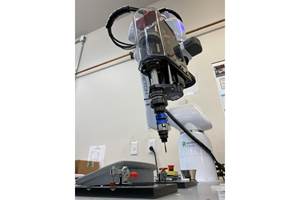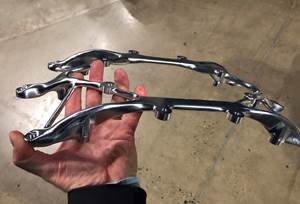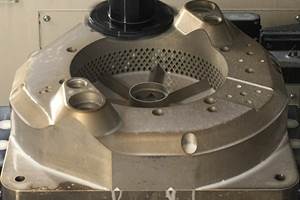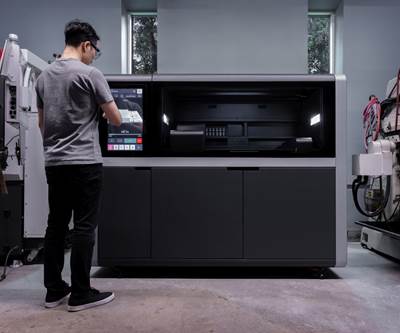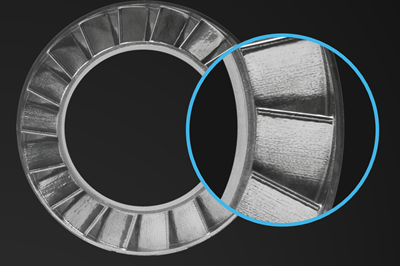Share
Read Next
Like many metal parts, a golf club’s head typically starts as a casting or a forging. This near-net metal shape is made using tooling, often overseas. That can mean months just to create a prototype of a new design, not to mention shipping delays and other potential headaches when a new club goes into production. And once a casting or forging is delivered, it will need many more touches to be completed.
“You’ve got to grind and polish and finish and cut grooves,” says Mike Yagley of Cobra Golf. “There’s machining. There’s handwork. It could need PVD [physical vapor deposition] or chrome. You have to add medallions to make it look pretty, and maybe some weight pieces. If you’ve got little engravings, you paint fill. It’s a very labor-intensive process.”
Yagley is the vice president of innovation/AI at Cobra Golf, a golf equipment supplier that has been owned by Puma since 2010. While product development and final assembly of Cobra clubs takes place in Southern California, the individual components largely come from suppliers elsewhere in the world. Castings and forgings are made in Asia and grips manufactured in Mexico, for instance. Although cost-effective, this global supply chain has necessitated long design iteration cycles and slowed the launch of new products.
But Cobra recently introduced an innovative new design for a putter head that did not begin with a casting or forging. Introduced in November of 2020, the King Supersport-35 is possibly the world’s first golf club to feature a metal 3D printed head. Cobra worked with HP and Parmatech (an early adopter of the former’s Metal Jet Fusion technology) to develop a stainless steel club head that takes advantage of the design benefits possible through 3D printing.

Most golf club heads begin as castings or forgings, often produced overseas. The head of the King Supersport-35 putter, on the other hand, was metal 3D printed within driving distance of Cobra Golf — a shift that supported greater design innovation as well as a shorter supply chain when the club went into production. Photo Credits: Cobra Golf
Metal Jet Fusion is a binder jetting process that selectively drops binding agent into a bed of metal powder. The binder temporarily holds the “green” parts together until they can be sintered to dense metal in their final dimensions. The 3D printing process needs no tooling and supports batching many parts together; different designs can even be made in the same build.
After going through more than 50 design iterations in just one year (unheard of with current golf club supply chains), the three companies landed on a putter that both looks and plays differently than a conventional one. The final club incorporates finishing touches common to most other putters (machined surfaces, face plates, paint) but still showcases its additive origins. A lattice geometry made possible though 3D printing distributes the club head’s weight to its outer perimeter, which reduces its twist and helps to improve a player’s putting consistency.
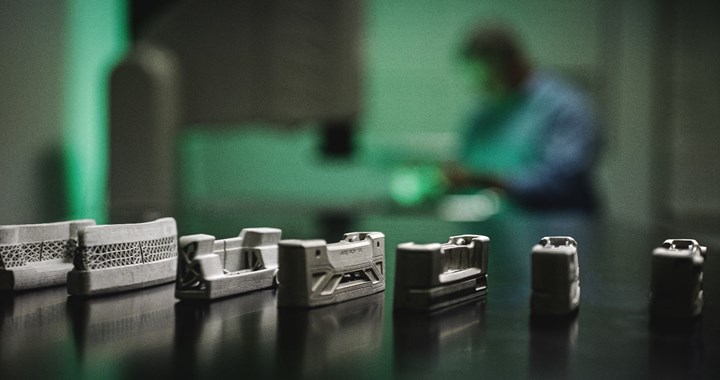
Just a handful of the 56 design iterations Cobra Golf explored in developing the King Supersport-35 putter. Metal Jet Fusion made it possible to create new iterations without tooling and even 3D print different variations together in the same build.
At a price point of $399, the King Supersport-35 is a high-end buy and not a club that will be ubiquitous among golfers any time soon. But it is far more than a novelty putter. Through the process of creating this new product, Cobra Golf has found a way of making an innovative club closer to home. All three companies involved are based in California, which allowed for simple collaboration and faster design iteration, but also a much shorter supply chain as the putter head went into production at Parmatech’s facility. Cobra expects to increase its use of Metal Jet 3D printing, and anticipates that the cost of the process will continue to drop making this a more broadly viable option for production.
For more on this application and how increased adoption of 3D printing will change aesthetics as well as production, see the full story on AdditiveManufacturing.Media.
Related Content
How Automation Keeps Quality Control in Control
Collaborative robots help inspection keep pace with machining in a custom, digitalized workflow for complex aerospace and defense parts.
Read MoreAdditive/Subtractive Hybrid CNC Machine Tools Continue to Make Gains (Includes Video)
The hybrid machine tool is an idea that continues to advance. Two important developments of recent years expand the possibilities for this platform.
Read MoreUsing Topology Optimization to Lightweight: A Paradox for Machining
Today’s computer software can just as easily generate lightweight shapes for subtractive processes as it can for additive ones, but it increases cost and waste to make them.
Read More10 Ways Additive Manufacturing and Machining Go Together and Affect One Another
Forget “additive versus subtractive.” Machining and metal additive manufacturing are interconnected, and enhance the possibilities for one another. Here is a look at just some of the ways additive and machining interrelate right now.
Read MoreRead Next
Can This Metal 3D Printing System Make Production Additive Manufacturing Common in Machine Shops?
A new metal AM system for batches of end-use parts was designed to permit productivity and machine pricing comparable to a CNC machine tool.
Read MoreA Benefit of Additive Manufacturing: No Tooling Is Required
Manufacturers need to understand the cost curves in regard to “conventional” manufacturing practices and those of additive manufacturing.
Read MoreHere Is Why Knust Godwin Decided to 3D Print Mission Critical Parts
Knust Godwin introduced metal 3D printing into its precision-machining environment nearly eight years ago. Now the company is using the capability to break through into new applications and give 3D printed mission-critical parts a renewed business case.
Read More

.jpg;width=70;height=70;mode=crop)

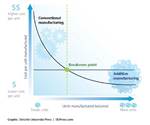
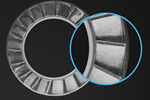




.png;maxWidth=300;quality=90)










